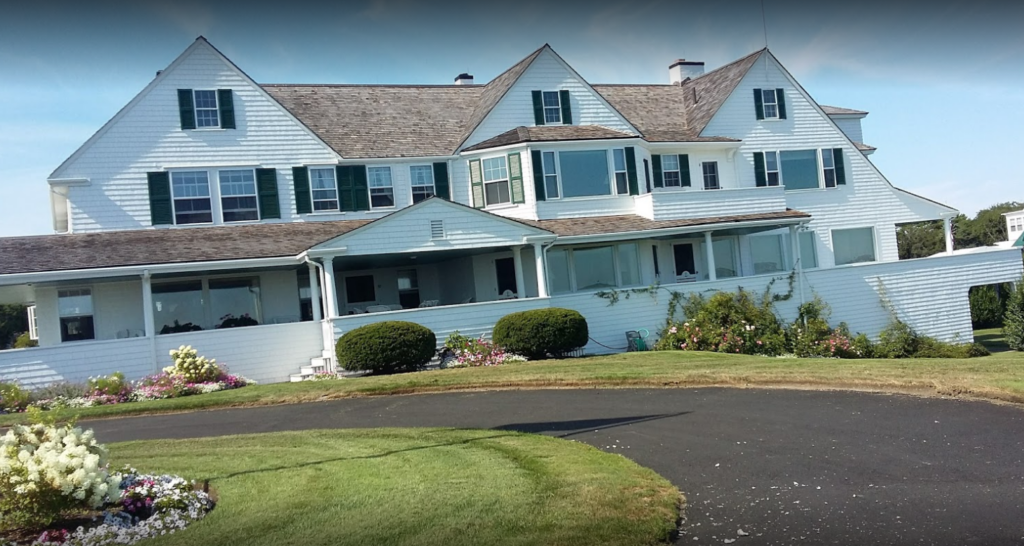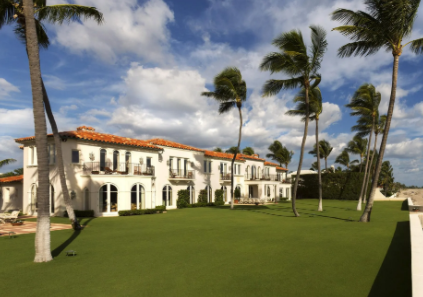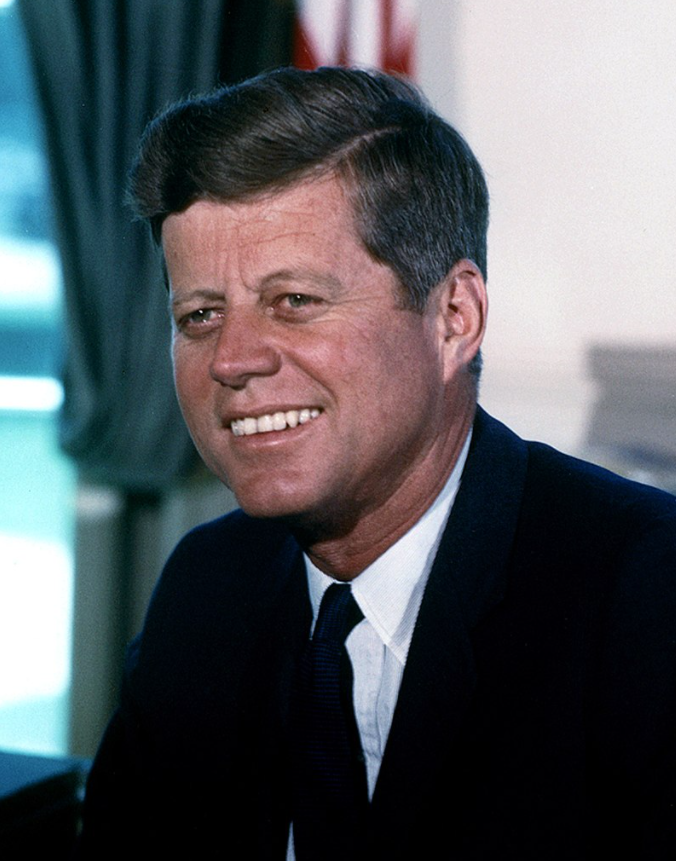John F. Kennedy’s birthplace, a National Historic Site at 83 Beals St. in Brookline, Mass.
In 1914, soon after they were married, Joseph and Rose Kennedy moved into the nine-room Colonial house. Those who visit the house can still see the bassinet where John slept as a baby, along with the piano he played as a boy and the books his mother offered in an effort to instill a love of reading in her son. “I was very careful to select books which were recommended at school or a children’s bookshop,” Rose Kennedy said. “Probably Jack’s favorite book was ‘King Arthur and his Knights.’ ” When John was just 10 years old, the family moved to New York. But John Kennedy returned to Massachusetts in 1936 to attend Harvard College. Go to Domustoria.com/signup/ and get posts like this every week!

The Kennedy Compound consists of three houses on six acres (24,000 m²) of waterfront property on Cape Cod along Nantucket Sound in Hyannis Port, Massachusetts, in the United States. It was once the home of Joseph P. Kennedy, an American businessman, investor, politician, and U.S. ambassador to Great Britain; his wife, Rose; and their children, including U.S. President John F. Kennedy and U.S. Senators Robert F. Kennedy and Edward M. Kennedy. As an adult, the youngest son, Edward, lived in his parents’ house, and it was his primary residence from 1982 until he died of brain cancer at the compound, in August 2009.[2]
John F. Kennedy used the compound as a base for his successful 1960 U.S. presidential campaign and later as a summer White House and presidential retreat, until his assassination, in November 1963. In 2012, the main house was donated to the Edward M. Kennedy Institute for the United States Senate.[3] As of 2020, Robert Kennedy’s widow Ethel lives in their adjacent home to the main house.[4]

Known to millions as the “Winter White House,” the former Kennedy family compound on the ocean in Palm Beach has changed hands for a recorded $31 million.
Merchant banker John K. Castle and his wife, Marianne, sold the 1920s-era house, its two outbuildings and about an acre of land — with 200 feet of beachfront — to a company associated with seasonal Palm Beacher Jane Goldman, according to the deed recorded today by the Palm Beach County Clerk. The Castles bought the estate at 1095 N. Ocean Blvd. from the Kennedy family in 1995.
The Castles shared the view of historians who consider the house an iconic piece of American history associated with one of the nation’s most prominent families. It was a place where generations of Kennedys lived and played, including President John F. Kennedy, who is said to have worked on his inaugural address there.

John Fitzgerald Kennedy (May 29, 1917 – November 22, 1963), often referred to by his initials JFK and Jack, was an American politician who served as the 35th president of the United States from January 1961 until his assassination in November 1963. Kennedy served at the height of the Cold War, and the majority of his work as president concerned relations with the Soviet Union and Cuba. A Democrat, Kennedy represented Massachusetts in the U.S. House of Representatives and Senate prior to becoming president.
Kennedy was born into a wealthy, political family in Brookline, Massachusetts. He graduated from Harvard University in 1940, before joining the U.S. Naval Reserve the following year. During World War II, he commanded a series of PT boats in the Pacific theater and earned the Navy and Marine Corps Medal for his service. After a brief stint in journalism, Kennedy represented a working-class Boston district in the U.S. House of Representatives from 1947 to 1953. He was subsequently elected to the U.S. Senate and served as the junior Senator from Massachusetts from 1953 to 1960. While in the Senate, Kennedy published his book, Profiles in Courage, which won a Pulitzer Prize. In the 1960 presidential election, he narrowly defeated Republican opponent Richard Nixon, who was the incumbent vice president.
Kennedy’s administration included high tensions with communist states in the Cold War. As a result, he increased the number of American military advisers in South Vietnam. In April 1961, he authorized an attempt to overthrow the Cuban government of Fidel Castro in the Bay of Pigs Invasion.[2] Kennedy authorized the Cuban Project in November 1961. He rejected Operation Northwoods (plans for false flag attacks to gain approval for a war against Cuba) in March 1962. However, his administration continued to plan for an invasion of Cuba in the summer of 1962.[3] The following October, U.S. spy planes discovered Soviet missile bases had been deployed in Cuba; the resulting period of tensions, termed the Cuban Missile Crisis, nearly resulted in the breakout of a global thermonuclear conflict. The Strategic Hamlet Program began in Vietnam during his presidency. Domestically, Kennedy presided over the establishment of the Peace Corps and the continuation of the Apollo space program. He also supported the civil rights movement, but was only somewhat successful in passing his New Frontier domestic policies.
On November 22, 1963, he was assassinated in Dallas. Vice President Lyndon B. Johnson assumed the presidency upon Kennedy’s death. Marxist and former U.S. Marine Lee Harvey Oswald was arrested for the state crime, but he was shot and killed by Jack Ruby two days later. The FBI and the Warren Commission both concluded Oswald had acted alone in the assassination, but various groups contested the Warren Report and believed that Kennedy was the victim of a conspiracy. After Kennedy’s death, Congress enacted many of his proposals, including the Civil Rights Act and the Revenue Act of 1964. Kennedy ranks highly in polls of U.S. presidents with historians and the general public. His personal life has also been the focus of considerable sustained interest following public revelations in the 1970s of his chronic health ailments and extramarital affairs.
